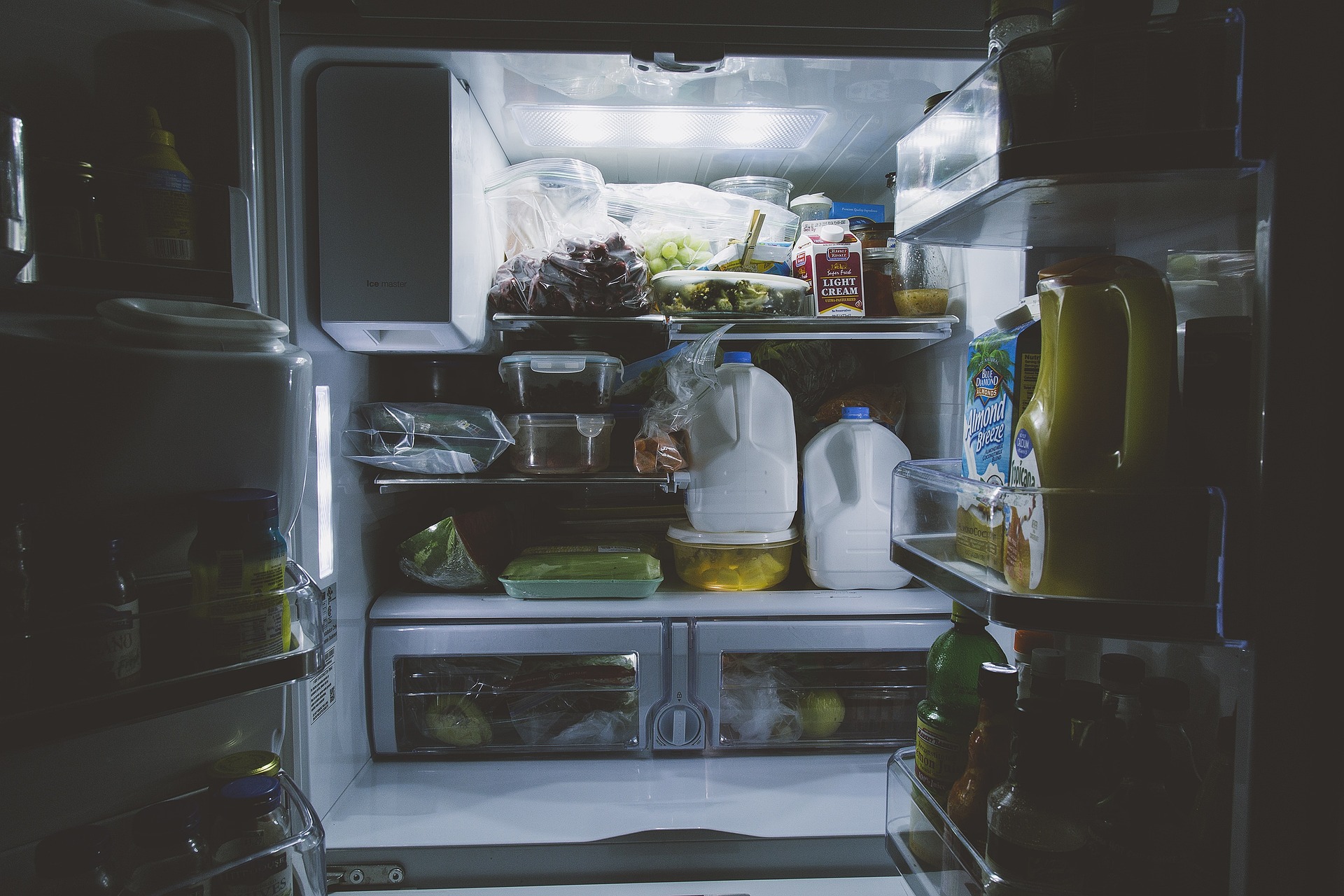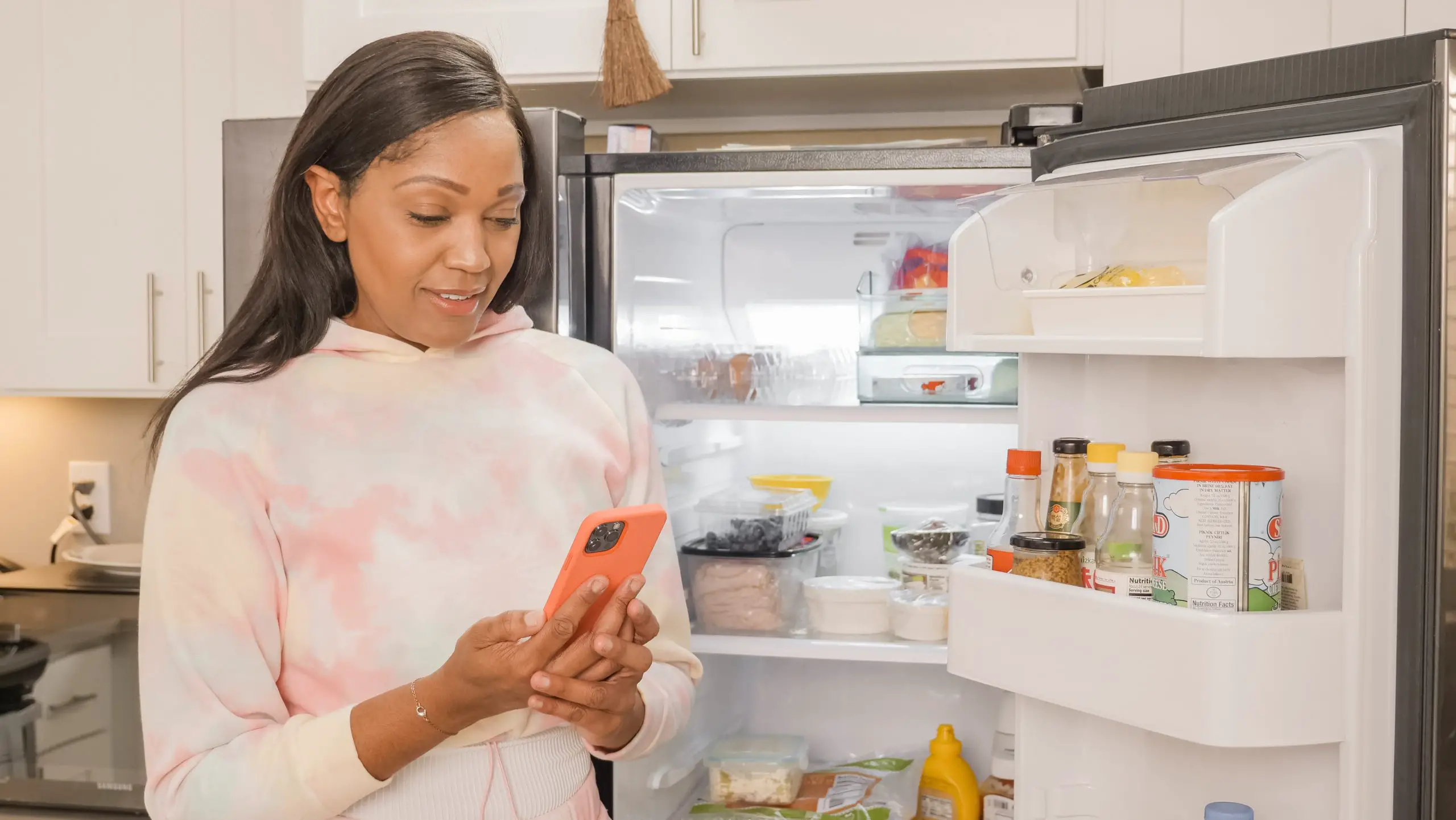Your initial thinking after losing electricity probably centres on how bored you’ll be without the internet. The next thing that comes to mind is how hot or cold you’ll be without air conditioning or heat.
However, once your hunger starts grumbling, you’ll realise that a power loss also signals the start of the clock for the perishable foods in your fridge and freezer.
We all know why we have refrigerators and freezers: many items need to be kept at cold temperatures to stay safe and fresh. However, how long is too long for perishable goods to be exposed to elevated temperatures?

How Long can Food Last in the Fridge Without Power?
Your refrigerator’s temperature should be set to less than 40 degrees Fahrenheit, and your freezer should be set to 0 degrees Fahrenheit to avoid the growth of germs that cause foodborne diseases.
Without electricity, these temperatures will rise over time and may even reach levels that jeopardise the safety of your food.
First things first: If your power goes out, avoid opening your refrigerator or freezer to help keep your appliances as cool as possible.
A power outage won’t harm food that spoils quickly:
- Up to four hours in the refrigerator
- 24 hours in a half-full freezer
- 48 hours in a fully-filled freezer
Your food is probably safe if the electricity is restored within these specified times. Any food that has acquired a strange odour, colour, or texture should still be thrown out.
It’s important to note that the time frames listed above only apply if you keep the freezer and refrigerator doors closed. These rules are no longer applicable if you opened the doors, particularly if you did it more than once.
Which Foodstuffs After a Power Outage Should you Discard?
Perishable foods in your refrigerator should be thrown out after a power outage of more than four hours to reduce the risk of contracting a foodborne illness.
Additionally, never taste food to see if it’s safe to eat. This may go without saying, but we’ll say it anyway. Decide what can be kept and what needs to be thrown away by understanding what is perishable and what is not.
After losing electricity for more than four hours, you should discard any perishable foods in your refrigerator, including:
- Foods including meat, chicken, fish, seafood, and soy (raw or cooked)
- Eggs and dishes made with eggs
- Chopped or cooked vegetables
- Bottled greens
- Sliced fruit
- Cooked pasta or rice
- Open juices made from fruits or vegetables
- Goods made from dairies, such as milk, cream, yoghurt, sour cream, and soy milk
- The formula has been opened.
- Supple cheeses (mozzarella, ricotta, cream, blue, cottage, queso fresca, Monterey Jack, brie, and shredded cheese)
- Creamy custard, gravy, cream-filled pastries, and salad dressings
- Breading or batter
- Prepared foods or leftovers containing any of the ingredients above
- Horseradish, mayonnaise, and tartar sauce (if exposed to temperatures above 50°F for more than eight hours)
Throw away any food that has developed an unusual odour, colour, or texture and any food whose juices have been contaminated from raw meat or shellfish.
It’s time to examine the food items in your freezer if a power outage lasts an entire day (if your freezer is just half full) or two days (if your freezer is filled).
Perishable objects frequently discovered in a freezer include:
- Any of the objects above that you keep frozen for a long time
- TV dinners, breakfast sandwiches, tacos, or frozen pizzas with sausage or bacon
- Icy dessert
- dishes with a custard or cream foundation, like cheesecake
Perishable foods are safe to consume and refreeze if your freezer consistently maintains a temperature below 40 degrees Fahrenheit. Throw away any of the following perishable products that have been fully thawed if you don’t know the freezer’s temperature. Only if the perishable item still includes ice crystals can it be securely refrozen after it has thawed; otherwise, the item’s quality and flavour may suffer.
What Food Products can you Safely Store After a Power Outage?
It’s unnecessary to throw out everything in your refrigerator or freezer because the power was out for a long time for food safety reasons.
It’s safe to store condiments and food items with a high acid content, for example:
- Olives, jelly, pickles, relish ketchup, mustard, and vinegar-based salad dressings.
Just be aware that they can spoil earlier than they normally would have, so be sure to smell them first.
Furthermore, certain goods that are frequently kept in the refrigerator don’t necessarily need to be refrigerated (thus, they are still safe to eat), such as:
- Whole fruits
- Complete vegetables
- A baked good (unless they have a cream-based icing, topping, or filling)
- Tough cheeses (cheddar, swiss, parmesan, romano)
- Margarine and butter
- Almond butter
- Herbs
However, discard any of these goods that have a strange odour or have become mouldy.
And remember this general maxim: If in doubt, toss it out while cleaning out your refrigerator and freezer following a power outage.
What are the Guidelines for Food Preservation if you Anticipate a Power Outage?
Sometimes, the power goes out without notice, leaving you with little choice but to close the doors to your freezer and refrigerator and wait for it to turn back on so you can eat the perishables.
You may know that losing electricity is a risk at other times, such as before a hurricane or winter storm.
Use the following advice to help keep perishable food cold in these circumstances:
Stock up on non-perishable food items. Thanks to this, you won’t have to access your freezer or refrigerator during a power outage.
Keep a thermometer in your freezer and refrigerator. These time frames are estimations, but perishable foods should be safe in your refrigerator for four hours, in a half-full freezer for 24 hours, and in a full freezer for 48 hours. They lose credibility if you open your freezer or refrigerator, too.
Using an appliance thermometer as your reference is the most precise approach to determining whether your food is secure following a power outage.
Put food in your freezer. A full freezer can maintain a safe temperature for twice as long as a half-full freezer. Compared to being in a refrigerator without power, think about filling the space in your freezer with perishable products from your refrigerator, which will also help lengthen the amount of time these foods remain safe. Additionally, you can put ice or water jugs in your freezer.
Prepare a cooler with lots of ice. Make sure the cooler doesn’t get hotter than 40 degrees Fahrenheit by using a thermometer and add ice as necessary. Move perishable things in your refrigerator to an insulated cooler filled with plenty of ice if the electricity doesn’t come back after four hours.
Reference: Most Americans are Not Prepared to Ensure Food Safety during Power Outages and Other Emergencies
Natural catastrophes (such as earthquakes, and occurrences (such as wildfires and hurricanes) that might cause a prolonged power outage can put food safety at risk and result in a higher chance of contracting a foodborne illness. Taking August 2003 as an example, 9 million A power outage that affected New York City (NYC) residents left some two days without electricity for the residents. More than 20 emergency rooms in NYC, a statistically significant increase in a rise of patients visiting doctors with diarrhea 70% more than anticipated, two days following the first power outage.
How to Keep your Freezer and Refrigerator Cold Without Electricity?
The most important advice is to keep the doors closed no matter how much you want to open them after the power has already gone out! When you open a refrigerator or freezer, cold air molecules will rush out while warm air molecules rush in, raising the temperature noticeably. Refrigerators are designed to be insulated.
However, you must do a few things right now if you neglect to prepare your refrigerator in advance.
Barbara Brown, an associate professor of nutritional sciences at Oklahoma State University, advises grouping packages of food together as soon as possible so they may help keep each other cold if your freezer is not full when the power goes out. “Be sure to separate meat and poultry, so they are underneath other meals when you do that. In this manner, their fluids won’t drop onto meals ready to consume if they start to thaw. Just be careful to close the refrigerator or freezer promptly.
After four hours, either place the food into those coolers or place the made ice in the refrigerator to keep it cold for a little while until the power is restored. The FSIS warns against leaving food outside during a snowstorm, even though it would seem sensible. Why? Your food may be exposed to sunlight, humidity, other unclean elements, animals, and changing outdoor temperatures.
You can always light some candles, host a mini-blackout party, and cook a feast while you can if the power is still out after four hours and the temperature in your refrigerator starts to creep beyond 40 degrees. Of course, this assumes that your food is still safe to consume.
Do Certain Foods Stay Better than Others?
Yes! According to FoodSafety.gov, the length of time food remains fresh in the refrigerator without electricity varies on the food itself. While fresh eggs kept in their shells may often last three to five weeks in the refrigerator, and even expired eggs have a longer shelf life than their expiration date says, exposing them to temperatures above 40 degrees for more than two hours will expose them to hazardous bacteria. The same is true for milk, but you may extend its shelf life by storing it in the coldest section of the refrigerator.
Even while cooking meat, it’s crucial to follow correct storage procedures to avoid cross-contamination and leaking. Raw meat should be tightly wrapped, especially in the freezer, to minimize leakage and contamination as it thaws.
About cheese, firm cheese blocks like cheddar or parmesan should be fine during a power outage. You can clip off any moldy portions and still consume the remaining cheese. However, when the temperature rises beyond 40 degrees, soft cheeses like cream cheese, ricotta, and mozzarella become considerably more bacterially vulnerable and lose a lot of their shelf life.
Fortunately, high-acid foods like dairy-free sauces, pickles, jellies, and jams should be fine at slightly higher temperatures, as well as vegetables and fruits (as long as they aren’t cut).
Conclusion
If your refrigerator and freezer have power outages, you’ll probably want to check your food before you eat it to avoid spoiling. It must be thrown out if it’s spoiled, smelly, or moldy. Power outages happen without notice and are often a result of severe weather. During these situations, it’s best to throw away perishable food as quickly as possible to avoid foodborne illnesses.
If you don’t have electricity, dry ice can keep your perishables cold in the refrigerator during power outages. Dry ice has a temperature of -109 degrees, which will help keep your perishables cold. You can even use dry ice in coolers to transport them. This is an excellent way to keep perishables cold and safe.
